THE OCEAN NAVIGATIONS OF THE FIRST ROUND THE WORLD TOUR (1519-1522)
DOI:
https://doi.org/10.51743/cih.86Keywords:
circumnavigation, Magallanes, ElcanoAbstract
We'll describe the sailings and all the challenges during the first cir-cumnavigation. Under Magallanes command, five "armada" warships sailed off to find the species' islands, always heading to the W, for which he would have to previously find a passage to the "Mar del Sur", discovered by Vasco Núñez de Balboa six years earlier. The Victoria, under J.S. Elcano command, would arrive in Seville three years later, with 18 men on board, after having opened a new route of navigation between Timor and the Cape of Good Hope. The sufferings were extraordinary, but over all difficulties the tenacity and persever-ance triumphed. This Spanish enterprise was opposed by the king of Portugal; Carlos I of Spain supporting and funding in 75% (other 25% disbursed by Burgos born banker Cristobal de Haro) would seek that empire in which the sun haven´t sunset.
Downloads
Global Statistics ℹ️
|
460
Views
|
414
Downloads
|
|
874
Total
|
|
References
BAERT, Annie: "Los primeros viajes españoles a las islas de Tuamotu". Revista Española del Pacífico. Nº 11. Año X- 2.000. Págs. 66/68.
BAIÂON Antonio: A viagem de Fernâo de Magalhaes por uma testemunha presencial. Arquivo Histórico de Portugal. VOL.I. Lisboa, 1937.
BARROS, Joâo de: Da Asia: Década III , Livro V. Lisboa 1777.
BLANCO NÚÑEZ, José María: "La expedición de Magallanes. Organización y métodos". Actas del VII Simposio de Historia Marítima. Lisboa, 2002.
CARO PROENÇA, José: Actas VII Simpósio de Historia Marítima: "Fernão de Magalhães a sua viagem no Pacífico". Lisboa, 2012.
CEREZO MARTÍNEZ, Ricardo: 1.- La cartografía náutica en los siglo XIV, XV XVI. CSIC. Madrid, 1994. 2.- "Conjetura y realidad geográfica en la primera circun navegación de la Tierra". Actas Congreso de Historia del Descubrimiento. Tomo II, Madrid, 1992.
COMELLAS, J.L.: La Primera Vuelta al Mundo. Madrid, 2012.
DA FONSECA, João Abel: "De perseguidor de Fernão de Magalhães a descobridor da Austrália?". VII Simpósio de Historia Marítima. Lisboa 202. Págs. 277-290.
DE BRIONES VIEJOBUENO, José Luis: Oceanografía para meteorólogos. Madrid, 1958.
DOURA, Miguel: "Acerca del topónimo Patagonia, una nueva hipótesis de su génesis". Nueva Revista de Filología Hispánica, vol. 59, Nro.1, (2011) . DOI: https://doi.org/10.24201/nrfh.v59i1.1032
FERNÁNDEZ DE ENCISO, Martin: Suma de Geographia (1519). Edición y estudio de M. CUESTA DOMINGO. Museo Naval. Madrid, 1987.
FERNÁNDEZ DE NAVARRETE, Martin: Colección de opúsculos. Madrid, 1848. MARTINEZ RUIZ, Enrique y tres más (entre ellos el autor de este artículo): Desvelando Horizontes IHCN. Madrid, 2016.
FITZPATRICK, Scott y CALLAGHAN, Richard: "El Niño May Have Been Factor In Magellan's Pacific Voyage". Universidad Estatal de Carolina del Norte. Science Daily, 16.05.2008. www.sciencedaily.com/releases.
GONZÁLEZ, Pedro María: Tratado de las enfermedades de la gente de mar. Imprenta Real, Madrid, 1805.
MARAÑÓN POSADILLO, Gregorio: Obras Completas. Madrid, 1973.
MENENDEZ PIDAL, Ramón: La lengua de Cristobal Colón. Espasa-Calpe. 6ª edición. Madrid, 1978.
MOREU CURBERA, José María y MARTINEZ JIMENEZ, Enrique: Astronomía y Navegación, Tomo I. Vigo, 1968.
PIGAFFETA, Antonio de: Primer viaje en tono al Globo. Austral. 5ª Edición. Madrid, 1963.
TORIBIO MEDINA, José: El descubrimiento del Océano Pacífico. Hernando de Magallanes y sus compañeros. Santiago de Chile, 1920.
VARIOS AUTORES: La primer vuelta al mundo. Miraguano Ediciones. 2ª Edición. Madrid, 2012.
VÁZQUEZ, Francisco: Primaleón (segunda parte del Palmerin de Oliva). Salamanca, 1512.
VON HUMBOLDT, Alexander. Viaje a las regiones equinocciales del Nuevo Continente. Caracas: Ministerio de Educación, Biblioteca Venezolana de Cultura, 1941-1942, 1956. Segunda edición de Monte Ávila, 1991, 5 tomos.
Downloads
Published
How to Cite
Issue
Section
License
The Fundación Universitaria Española publishing house preserves the patrimonial rights (copyright) of published works, and encourages and allows their reuse. The works are published in the electronic edition of the journal under a license “Creative Commons Atribución/Reconocimiento-NoComercial 4.0 Licencia Pública Internacional — CC BY-NC 4.0”, and can be copied, used, disseminated, transmitted and publicly exhibited, provided that : a) the authorship and original source of its publication is cited (journal, publisher and URL of the work); b) are not used for commercial purposes; c) the existence and specifications of this license of use are mentioned.
The author / s partially transfer the property rights (copyright) of this work to the Fundación Universitaria Española (Spain) (NIF: G28433670), for the printed and online editions.
It also declares to have respected the ethical principles of research and to be free from any conflict of interest.
«C.I.H.» encourages the authors and the scientific community to the maximum promotion and dissemination of the works in their final version through:
1) Your list of contacts (emails) and social networks (Facebook, Twitter, LinkedIn ...).
2) Institutional repository of your University and public repositories (Mendeley, Cosis ...).
3) Scientific social networks (ResearchGate, Academia.edu, Kudos ...).
4) Personal or institutional website, blog, etc.
5) Google Scholar, ORCID, ResearchID, ScopusID, Dimensions, PlumX ...
6) Printed copies purchased directly and sent to specialists for reading and subsequent citation if appropriate.
For the nomination of future articles by authors of "C.I.H.", the impact of previous works will be taken into account, so that those with citation higher than the annual average of the journal will be preferred.






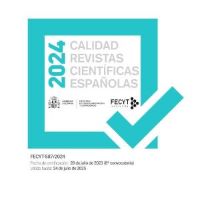




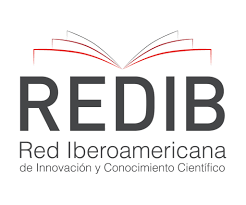
2.jpg)


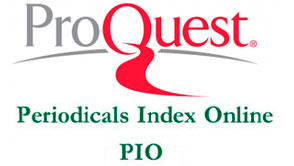
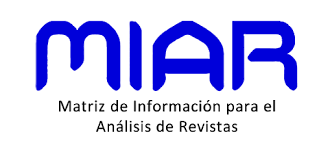



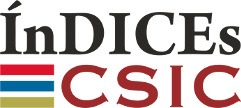



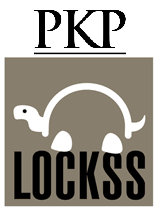




1.png)
1.png)

1.png)


.png)
.png)

.png)
1.png)
1.png)
